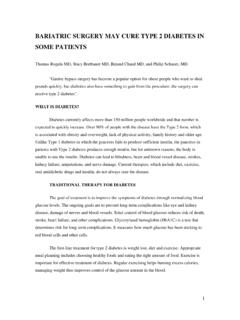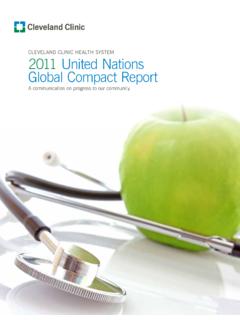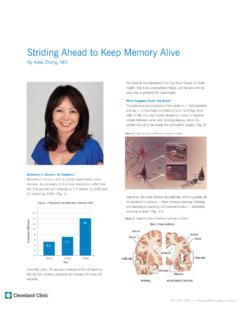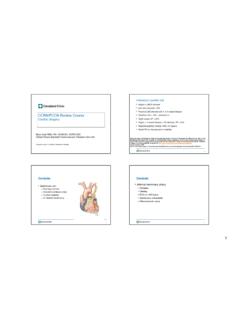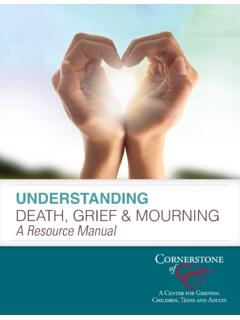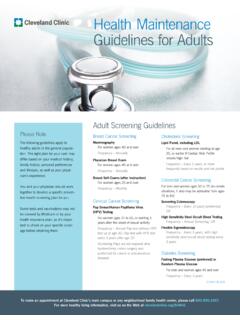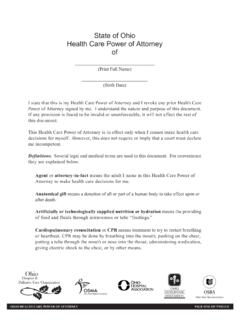Transcription of CCRN/PCCN Review Course Cardiovascular: Oxygenation
1 CCRN/PCCN Review CourseCardiovascular: OxygenationTheresa Cary RN, MSN, ACNS-BC, CCRNC linical Nurse SpecialistCardiac Medical Step-DownThe author has no conflicts of interest to discloseDeterminants of Myocardial Oxygen Supply and DemandOxygen Supply Coronary Artery Anatomy Diastolic Pressure Diastolic Time Oxygen Extraction Hemoglobin PaO2 Oxygen Demand Heart Rate Afterload Preload ContractilityMyocardial oxygen consumptionCleveland ClinicAtherosclerosis Affects mainly large and medium-sized arteries Can begin in childhood and is progressive Stable plaque may narrow the lumen of the artery causing chronic ischemia (stable angina) Unstable plaque can rupture thrombus that partially or completely occludes the artery acute ischemia (unstable angina)Determinants of Myocardial Oxygen Supply and DemandOxygen Supply Coronary Artery Anatomy Diastolic Pressure Diastolic Time Oxygen Extraction Hemoglobin PaO2 Oxygen Demand Heart Rate Preload Afterload ContractilityMyocardial oxygen consumptionDiastolic Pressure The myocardium receives its blood supply during diastole Atherosclerosis (coronary artery narrowing)
2 Causes a significant drop in diastolic pressure as blood is forced through a narrow lumen Diastolic pressure pressure, flow pressure, flowDiastolic Time Diastole determines the duration of coronary blood flow Fast heart rate means less time for coronary filling Diastolic Time time, filling time, fillingPracticeDiastole comprises what percentage of the cardiac cycle? A. Half B. Two-thirds C. One-fourth D. On-thirdBrorsen & Rogelet, 2009 PCCN Certification ReviewDiastole comprises what percentage of the cardiac cycle? B. Two-thirdsDiastole is a very important part of the cardiac cycle. It is the period during which 1) the heart chambers fill in preparation for systole and 2) the coronary arteries fill with freshly oxygenated blood to feed the heart muscle itselfPorth, Matfin, Pathophysiology: Concepts of Altered Health States 8th ed.
3 2009, picture croppedS1 closure of tricuspid, mitral valveS2 closure of pulmonic, aortic valveDeterminants of Myocardial Oxygen Supply and DemandOxygen Supply Coronary Artery Anatomy Diastolic Pressure Diastolic Time Oxygen Extraction Hemoglobin PaO2 Oxygen Demand Heart Rate Preload Afterload Contractility Oxygen is transported through blood in two ways combined with hemoglobin dissolved in bloodOxygen Extraction Oxygen is transported through blood in two ways combined with hemoglobin dissolved in blood 97% oxygen bound to hemoglobin (SaO2) 3% oxygen dissolved in arterial blood (PaO2) Tip: P = plasmato remember PaO2 is oxygen dissolved in blood Only dissolved oxygen can pass through capillary walls for cellular useOxygen Extraction Oxyhemoglobin dissociation curve Hemoglobin with bound oxygen is called Dissociation CurveOxyhemoglobin Dissociation Curve Shift to the rightHemoglobin releases oxygen more readily to tissues pH (acidosis) DPG temp Shift to the leftHemoglobin binds tightly to oxygen pH (alkalosis) pH (alkalosis)
4 DPG tempDeterminants of Myocardial Oxygen Supply and DemandOxygen Supply Coronary Artery Anatomy Diastolic Pressure Diastolic Time Oxygen Extraction Hemoglobin PaO2 Oxygen Demand Heart Rate Preload Afterload ContractilityMyocardial oxygen consumptionHeart Rate High heart rate More oxygen consumed at the tissue level Less oxygen rich blood delivered at the tissue level (less time for ventricular filling) Determinants of Myocardial Oxygen Supply and DemandOxygen Supply Coronary Artery Anatomy Diastolic Pressure Diastolic Time Oxygen Extraction Hemoglobin PaO2 Oxygen Demand Heart Rate Preload Afterload ContractilityMyocardial oxygen consumptionPreload Degree of ventricular stretch at end diastole Determined by the volume of blood in the ventricle at end diastole With increased in ventricular wall stress in myocardial oxygen consumption Principles of Oxygen Demand - Preload Preload numeric indicators: CVP (2-6 mmHg) PAOP (2 12 mm Hg) Preload drugs.
5 Diuretics, vasodilators (nitroglycerin, morphine, nitroprusside, calcium channel blockers, ACE inhibitors)Determinants of Myocardial Oxygen Supply and DemandOxygen Supply Coronary Artery Anatomy Diastolic Pressure Diastolic Time Oxygen Extraction Hemoglobin PaO2 Oxygen Demand Heart Rate Preload Afterload ContractilityMyocardial oxygen consumptionAfterload The load against which the heart must contract to eject blood into the aorta When afterload is in ventricular wall stress in myocardial oxygen consumption Afterload Numeric indicators SVR (800-1200 dynes/sec/cm5) PVR (< 250 dynes/sec/cm5) Systolic blood pressure (indirect indicator) Afterload reducing drugs: vasodilators SVR systemic vasodilators (nitroprusside, hydralazine, ACE inhibitors, calcium channel blockers, alpha blockers) PVR systemic vasodilators (prostacyclin) Intra-aortic balloon pumpPracticeIncreased afterload would be seen with A.
6 Polycythemia B. Aortic insufficiency C. Hypovolemia D. SepsisBrorsen & Rogelet, 2009 PCCN Certification ReviewIncreased afterload would be seen with A. PolycythemiaHypovolemia and sepsis decrease afterload, as does aortic insufficiency. Aortic stenosisincreases afterload, as do peripheral vasoconstriction and of Myocardial Oxygen Supply and DemandOxygen Supply Coronary Artery Anatomy Diastolic Pressure Diastolic Time Oxygen Extraction Hemoglobin PaO2 Oxygen Demand Heart Rate Preload Afterload ContractilityMyocardial oxygen consumptionContractility Strength of myocardial muscle fiber shortening during systole Influenced by preload Greater muscle fiber stretch greater recoil When contractility is high in wall stress in myocardial oxygen consumptionContractility Contractility indicators Evidence of sympathetic nervous system stimulation Contractility numeric indicators.
7 Systolic B/P Cardiac output Contractility enhancing drugs Digoxin, dobutamine, dopamine, milrinoneSigns of Decreased Cardiac Output Decreased level of consciousness Hypotension Weakness, fatigue, dizziness Nausea/vomiting Diaphoresis Shortness of breath, crackles Jugular venous distension Decreased peripheral pulsesAcute Coronary SyndromesCleveland ClinicAcute Coronary Syndrome A reduction or absence of blood flow to a portion of the myocardium resulting in ischemia &/or injury Unstable angina Non-ST elevation MI (reduction in blood flow) ST elevation MI (absence of blood flow)Six Primary Risk Factorsfor Atherosclerosis High blood cholesterol level Diabetes Mellitus - increases the rate of atherosclerotic progression Hypertension Tobacco use damages blood vessel walls atherosclerosis Male gender - difference narrows with age (women catch up) Family history genetics & acquired health practices ( , smoking high-fat diet)Bolooki & Bajzer, 2009 Coronary Artery Anatomy, Right Coronary Artery Supplies blood to.
8 Right atrium & ventricle Bottom of both ventricles Back of the septum Conduction System SA node in 55% of people AV node, 1stpart of Bundle of His in 90% of peopleRCALeft Coronary Artery Arises off of the ascending aorta and usually divides into two main branches: Left Anterior Descending Artery (LAD) Circumflex Artery (Cx)LCALADCxLeft Anterior Descending (LAD) Supplies blood to: Anterior wall of left ventricle Apex Anterior 2/3 of the septum Bundle of His RBB LBBLADC ircumflux Artery (Cx) Supplies blood to Left atrium Lateral, posterior, inferior left ventricle Conduction System Blood Supply SA node in 45% of people AV node and 1stpart of Bundle of His in 10% of peopleCxCoronary Atherosclerosis Slow, progressive disease Caused by accumulation of plaque within the arterial walls of the coronary arteries Plaque size enlarges over time Soft on the inside Hard fibrous cap covering the outside Stable, fixed in stable angina Plaque disruption in unstable angina Platelet aggregation in acute coronary syndromesAtherosclerotic plaquePorth & Matfin.
9 2009 Thrombus Formation Plaque ruptures - endothelial cover is torn away Spontaneous Sudden surge of sympathetic activity with in B/P, HR, force of contraction Platelets adhere, thrombus forms If thrombus enlarges enough complete occlusion of the coronary artery loss of blood supply to myocardium dependant on that coronary artery myocardial cell death after 20-40 minutesSerial Enzymes Myocardial cells contain enzymes and proteins With ischemia and cell death, cell membrane loses integrity enzymes and proteins leak into the from: Grech, E. D et al. BMJ 2003;326:1259-1261 NormalAcute ischemiaQ wave w/ AMIM attson Porth & Matfin, 2009 Four Phases of Acute ST Segment Elevation Myocardial Infarction (STEMI)Phase Time After OnsetPathophysiology10 to 2 hours (first few hours) Extensive myocardial ischemia within seconds of coronary artery occlusion.
10 About 30 min. after the interruption of blood flow, irreversible myocardial necrosis occurs in the subendocardium, and myocardial injury spreads toward the to 24 hours (1stday) By 3 hours, two-thirds of the myocardial cells within the affected myocardium become necrotic. By 6 hours, only a small percentage of the cells remain viable. The evolution of the transmural MI is to 72 hours (2ndto 3rdday) Minimal to no ischemic or injured myocardial cells remain because they have either died or to 8 weeks Fibrous connective tissue replaces the necrotic Pain P = Provocation Q = Quality R = Region/Radiation S = Severity T = Timing/TreatmentAngina Temporary imbalance between myocardial oxygen supply and demand causing ischemia Ischemia anaerobic metabolism causing an accumulation of lactic acid which causes chest pain No tissue injury Angina is associated with a coronary artery occlusion of 75% or moreTreatment of angina Relieve chest pain Rest Oxygen Medication.
